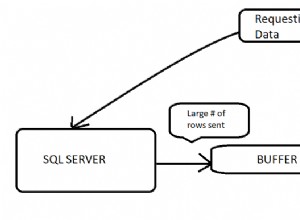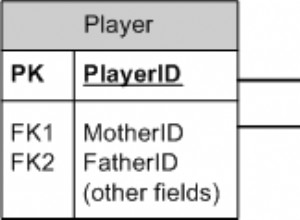É assim que você pode fazer isso
select @rn:[email protected]+1 as id,colors from (
(select @rn1:= @rn1+1 as rn,colors from table1,(select @rn1:=0)x order by id )
union all
(select @rn2:= @rn2+1 as rn,numbers as colors from table2,(select @rn2:=0.5)x order by id)
union all
(select @rn3:= @rn3+1 as rn,names as colors from table3,(select @rn3:=0.6)x order by id )
)x,(select @rn:=0)y order by rn ;
A ideia é atribuir um
rn valor para cada item da tabela e precisa garantir que esses valores estejam sempre em ordem crescente Então, se você executar a consulta para cada tabela, você terá
mysql> select @rn1:= @rn1+1 as rn,colors from table1,(select @rn1:=0)x order by id;
+------+--------+
| rn | colors |
+------+--------+
| 1 | red |
| 2 | green |
| 3 | blue |
| 4 | yellow |
+------+--------+
4 rows in set (0.00 sec)
mysql> select @rn2:= @rn2+1 as rn,numbers as colors from table2,(select @rn2:=0.5)x order by id;
+------+--------+
| rn | colors |
+------+--------+
| 1.5 | ten |
| 2.5 | two |
| 3.5 | one |
| 4.5 | three |
| 5.5 | six |
| 6.5 | five |
+------+--------+
6 rows in set (0.00 sec)
mysql> select @rn3:= @rn3+1 as rn,names as colors from table3,(select @rn3:=0.6)x order by id;
+------+--------+
| rn | colors |
+------+--------+
| 1.6 | jack |
| 2.6 | peter |
+------+--------+
2 rows in set (0.00 sec)
Aqui você pode ver
table1 rn os valores são 1,2,3,.... table2 os valores são 1.5,2.5,3.5,.... table3 os valores são 1.6,2.6,.... então, finalmente, quando você pedir o resultado com todos os rn, será tão
1,1.5,1.6,2,2.5,2.6,.... 



